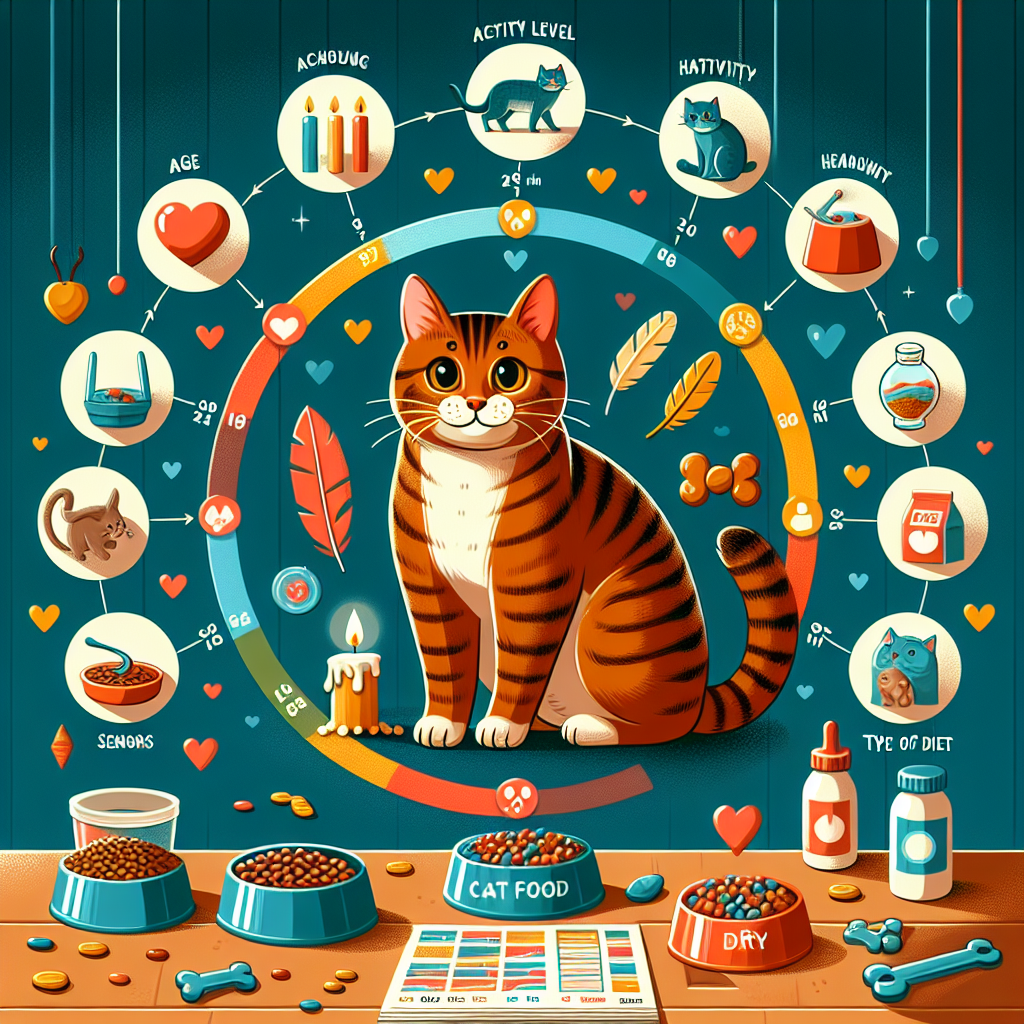Understanding Your Cat’s Dietary Needs
Cats require a balanced diet to maintain optimal health and energy levels. Their dietary needs depend on various factors, including age, activity level, and overall health. Unlike dogs, cats are obligate carnivores, meaning their bodies require a diet rich in animal proteins and essential nutrients.
Ensuring the right portion sizes is crucial to prevent obesity or malnutrition. Many pet owners struggle to determine the right amount of food, leading to either overfeeding, which causes weight gain, or underfeeding, which results in nutrient deficiencies. In this guide, we will explore how much cat food per day is appropriate for your feline companion.
Why Portion Control Is Essential for Cats
Portion control is vital for maintaining your cat’s ideal weight and overall health. Overfeeding can lead to obesity, which increases the risk of diabetes, heart disease, and joint problems. On the other hand, underfeeding can result in malnourishment, weak immunity, and poor coat health.
A structured feeding routine helps regulate digestion and energy levels. It also allows pet owners to monitor their cat’s appetite and detect any potential health issues early. Feeding guidelines provided by pet food manufacturers are a good starting point, but individual adjustments based on your cat’s unique needs are necessary.
Factors That Affect a Cat’s Daily Food Intake

Age and Life Stage (Kitten, Adult, Senior Cat)
Kittens require more frequent meals and higher-calorie food to support their rapid growth and development. An adult cat, on the other hand, needs a consistent diet to maintain energy levels and muscle mass. Senior cats may require specialized food with joint-supporting nutrients and lower calories to prevent weight gain.
Activity Level (Indoor vs. Outdoor Cats)
Indoor cats tend to be less active than outdoor cats and therefore require fewer calories. An active outdoor cat that roams and plays regularly will need a higher caloric intake to sustain its energy levels.
Cat’s Weight and Body Condition
Overweight cats require a carefully monitored diet with controlled portions and potentially a weight-management formula. Underweight cats need calorie-dense meals to regain a healthy body condition.
Health Conditions and Special Dietary Needs
Certain medical conditions, such as diabetes, kidney disease, or allergies, may require special dietary adjustments. Prescription diets are often necessary to address specific health concerns and ensure overall well-being.
Wet vs. Dry Cat Food: How Much to Feed?

Measuring the Right Amount of Wet Food Per Day
Wet food is rich in moisture, making it an excellent choice for hydration. In general, an adult cat of average size requires between 7-11 oz of wet food per day. The exact portion depends on the texture of the food, such as pâté, morsels, or shreds.
Pâté vs. Morsels vs. Shreds – Does Texture Affect Quantity?
Pâté tends to be denser and more filling, requiring slightly smaller portions than lighter textures like morsels or shreds. Cats may also have preferences based on texture, which can affect their daily intake.
Recommended Wet Food Portions for an Average Cat (7-11 oz/day)
A typical adult cat weighing 10 pounds should consume 7-11 oz of wet food per day, divided into two or three meals. Adjustments should be made based on activity level and metabolism.
How Much Dry Food Should a Cat Eat Per Day?
Dry food is calorie-dense and can be left out for free-feeding. A 10-pound cat typically needs about ½ to ¾ cup of dry food per day, depending on the brand and calorie content.
Dry Food Serving Sizes Based on Weight & Activity
More active cats require higher portions, while less active or overweight cats should have controlled servings to prevent weight gain.
Mixing Wet and Dry Food: Finding the Right Balance
Many pet owners opt for a combination of wet and dry food. A good balance could be feeding half the recommended portion of each type to provide variety and adequate hydration.
How Often Should You Feed Your Cat?

Free-Feeding vs. Scheduled Meals
Free-feeding involves leaving dry food out all day, while scheduled meals help control portions and monitor eating habits more effectively.
Best Feeding Routine for Kittens vs. Adult Cats vs. Seniors
Kittens require 3-4 meals per day, adults thrive on 2-3 meals, and seniors may benefit from smaller, more frequent meals to aid digestion.
Can You Leave Wet or Dry Food Out for Long?
Dry food can be left out longer than wet food, which should be consumed within a few hours to avoid spoilage.
Common Feeding Mistakes to Avoid
Overfeeding vs. Underfeeding – Signs to Watch For
Overweight cats struggle with mobility, while underfed cats may have dull coats and lethargy. Monitoring their body condition helps maintain the right balance.
How to Adjust Portions for Weight Loss or Gain
Gradual portion adjustments and choosing a suitable diet plan help regulate weight effectively.
Signs Your Cat Isn’t Getting Enough Nutrition
A lack of essential nutrients can lead to weak immunity, lethargy, and digestive issues.
Choosing the Right Cat Food for Your Feline
Reading Cat Food Labels – What to Look For
Understanding ingredient lists and nutritional content ensures you’re feeding high-quality food.
Wet vs. Dry: Which Is Better for Your Cat?
Both have benefits, but a mix of both provides balanced nutrition.
Special Diets – Grain-Free, High-Protein, or Prescription Food?
Some cats require specialized diets for allergies, weight management, or medical conditions.
Conclusion
Quick Recap of How Much to Feed Your Cat Per Day
An adult cat typically needs 7-11 oz of wet food or ½ to ¾ cup of dry food daily, adjusted based on weight and activity level.
Final Tips for Keeping Your Cat Healthy & Happy
Ensuring proper portion control, hydration, and a well-balanced diet will keep your cat happy and healthy.